A car moving with a velocity of 20 ms-1 stopped at a distance of 40 m. If the same car is travelling at double the velocity, the distance travelled by it for same retardation is
320 m
1280 m
160 m
640 m
C.
160 m
Velocity of car (u) = 20 ms-1
Distance (s) = 40 m
From Newton's third equation,
In the second condition, the velocity becomes twice i.e, u' = 2u
Again from Newton's third equation, we get
A car is negotiating a curved road of radius R. The road is banked at angle θ. The coefficient of friction between the tyres of the car and the road is μs . The maximum safe velocity on this road is,
![]()
![]()
![]()
![]()
A.
![]()
A car is negotiating a curved road of radius R. The road is banked at angle  and the coefficient of friction between the tyres of car and the road is
and the coefficient of friction between the tyres of car and the road is  .
.
The given situation is illustrated as: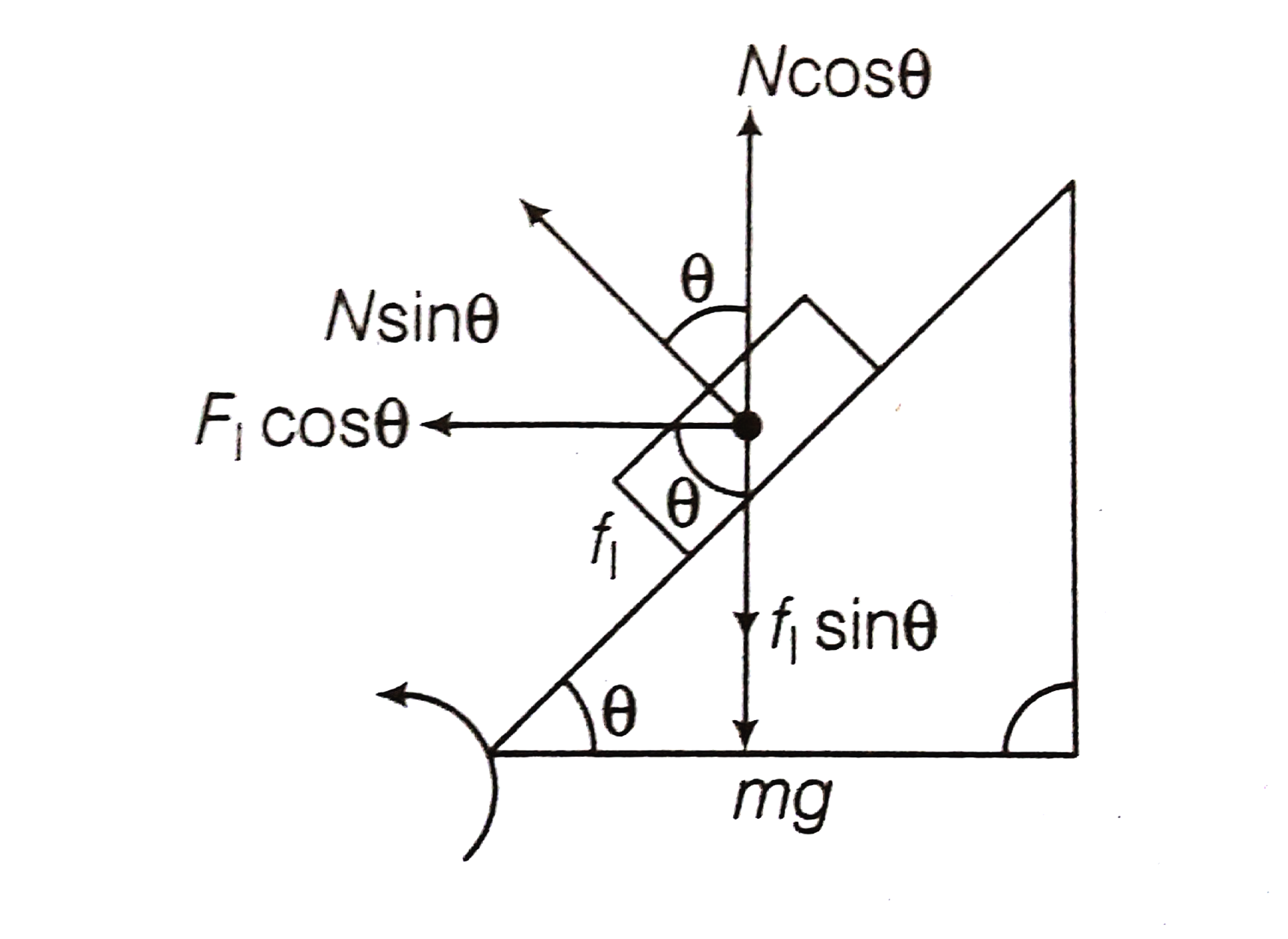
In the case of vertical equilibrium,
N cos  = mg + f1 sin
= mg + f1 sin  mg = N cos
mg = N cos  ... (i)
... (i)
In the case of horizontal equilibrium, ... (ii)
... (ii)
Dividing Eqns. (i) and (ii), we get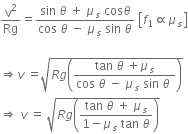
The resultant of two forces, one double the other in magnitude, is perpendicular to the smaller of the two forces. The angle between the two forces is
120°
60°
90°
150°
A.
120°
F1 = (F) one force
F2 = (2F) second force
Let θ is angle between F1 and F2
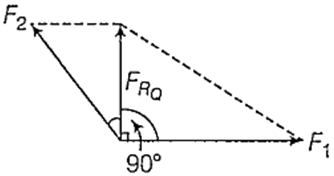
Here angle made by resultant FR is α with F1
A particle of mass m is driven by a machine that delivers a constant power K watts. If the particle starts from rest, the force on the particle at time t is




A.

As the machine delivers a constant power
So F, v =constant = k (watts)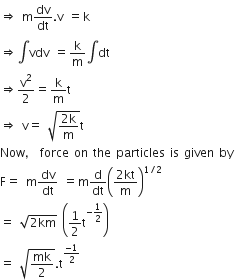
Three blocks A, B, and C of masses 4 kg, 2 kg and 1 kg respectively, are in contact on a 14 N is applied to the 4 kg block, then the contact force between A and B is
2 N
6 N
8 N
8 N
B.
6 N
Given, mA = 4 kg
mB = 2 kg
=> mC =1 kg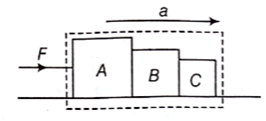
So total mass (M) = 4+2+1 = 7 kg
Now, F = Ma
14 = 7a
a=2 m/s2
F-F' = 4a
F' = 14-4x2
F' = 6N
